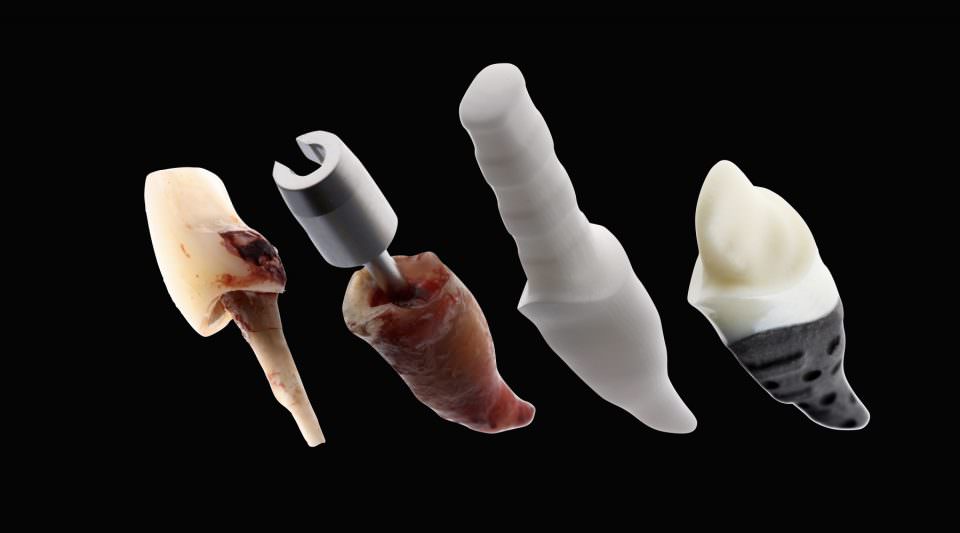
Author(s):
Saeidi Pour, R. , Freitas Rafael, C., Engler, M.L.P.D., Edelhoff, D. , Klaus, G. , Prandtner, O. , Berthold, M. , Liebermann, A.
Publication Date:
11. May 2019
DownloadDOI: https://doi.org/10.1016/j.bjoms.2019.01.021
The purpose of this paper is to provide an overview of the historical development of root analogue implants from their beginning to the present day.
After a tooth has been extracted there is an inevitable remodelling of the socket. As a result, it can limit the placing of an implant. The continuous resorption can reach up to 63% on horizontal and 11%-22% on vertical alveolar bone within six months. Alterations of the dimensions of the alveolar socket on the buccal wall are related to the resorption of the bundle bone a tooth-dependent structure that is left after the extraction with few or no vessels for its blood supply.
Immediate use of implants might control these alterations to the ridge by reducing the speed of resorption of the socket.
Usually the operator has to face some surgical challenges in this approach, including: difficulty in achieving primary stability and controlling the 3-dimensional position of the implant; discrepancies between the sizes of the implant and the socket; poor quality of bone that is often present in the extraction socket; and the need to prepare the socket with drilling burrs that can overheat the bone.
These challenges are related to the characteristics of conventional implants, mainly the standardized sizes and shapes.
Root-analog implants, however, represent an innovative concept to possibly circumvent these problems.
In order to be able to decide whether, in certain cases, biological and functional requirements are met, it is important for the dental team to have a detailed overview of the analogue root implant systems.
Learn more about innovative treatment concepts and their application in our stories and tutorials!